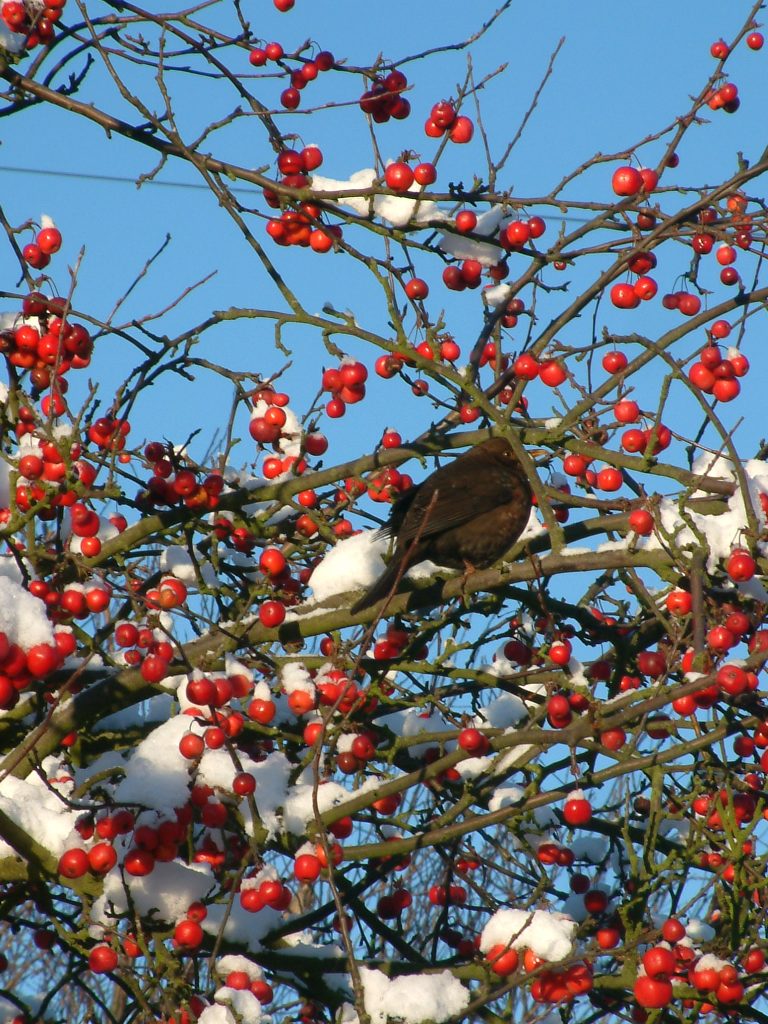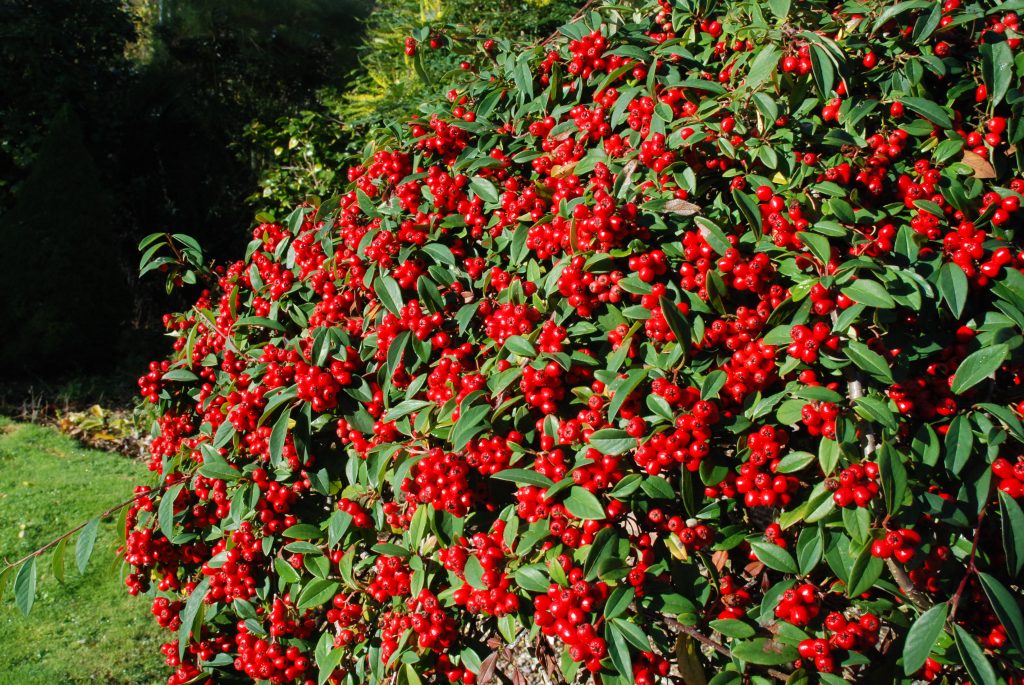
There is a delicious irony in the way that most gardeners love to feed wild birds and then curse them in summer when they polish off all the red currants and peck holes in every one of the strawberries. I am guilty as charged and have planted my fruit bushes in the garden and intend to build a fruit cage over them in spring to stand a chance of getting any fruit.
But I love to see birds in the garden. As I wander round the garden with the cat (she is only allowed out supervised) it makes the duty far more interesting when I can watch the wrens swearing at the pair of us, the blue tits flitting from branch to branch and the wagtails fluttering above us, squealing, to warn others of Mia’s crouched body.
With cold nights a regular feature now, and less food available for the birds, it is worth planting specifically to help keep them nourished and better able to survive winter. Native plants are obviously useful and hawthorn is a good choice. The birds have already stripped the mass of sloes off the bushes (we only took a few kilos for slow gin) and the elderberries were devoured months ago, as the bench under a tree testifies!
But equally popular have been the cotoneaster berries. I can’t say that I regard cotoneasters as the most exciting of shrubs but they are reliable and tough. My garden, in its infancy, needed some tough plants to try to provide some structure and I planted a hedge of Cotoneaster franchettii. This greyish green, large shrub has small pink flowers and scattered orange berries. It is not the beauty of the family and, as a hedge, it needs trimming twice a year. But boy is it tough! I would say that it is the success story of the garden so far, making a hedge just reaching 1.5m high in three years and planted in the worst possible soil. I am as happy as the blackbirds.

The flowers of cotoneasters are loved by bees for they are great for wildlife all year round so I have planted a cotoneaster ‘Cornubia’ too. This is a small tree and can be evergreen, though it has lost most of its leaves here in the gales. Though a dense shrub that casts deep shade, it is worth considering in a small garden because the display of rich red berries is nothing short of spectacular, till the birds move in!

I also planted a rose hedge, avoiding the more predictable Rosa rugosa with huge hips and planting Rosa rubiginosa, the sweet briar. It is only suitable for a loose hedge and cannot be neatly trimmed. Right now it is covered in hips but the birds have ignored them so far. Now we have had some frost to soften them up perhaps they will be more tempting.
Crab apples also seem to be tastiest after they are frosted, an irony that is not lost on me as the blackbirds, and the rooks, attack my eating apples as soon as the skins flush red in August. But crab apples are worth planting for so many reasons; their flowers are delightful, their fruits colourful and they are good pollinators for culinary apples. They are also small, manageable trees for gardens of any size.
Feeding birds
Of course, not all birds eat fruit so it is worth putting out food for other birds. Ideally try to provide a range of feeds and feeding stations. When you start to feed birds it may be a few days before the birds find the food and pluck up the courage to come close but once they do you will find they are fascinating and entertaining.
A few pointers!
Always buy good quality food. It may be tempting to buy cheap food but it is usually full of wheat and most birds won’t eat it – though pigeons and pheasants will. They will throw it on the ground for the rats! Look for high-energy foods which are more expensive but avoid waste. Some mixes have no live seeds which avoid the mass of seedlings under the feeder which is so often a problem.
Buy foods for specific birds. Fatty foods that include mealworms will attract robins and nyjer seeds will attract finches. These need special feeders to avoid waste.
Put feeders near bushes but not where cats or other predators can hide.
I find a problem is that, no sooner than the desired birds find the feeders but sparrow hawks and kestrels notice all the activity too so it is useful to move them around. Feeders with cages around them, partly to prevent squirrels taking the food, can protect against sparrow hawks too.
Provide an open, table feeder near ground level to feed thrushes and blackbirds – though often they will mop up discarded seeds from hanging feeders.
Provide water for the birds too and keep it clean.
Fruit that is too wrinkled for you to want to eat is relished by birds so all those soft apples, pears and grapes need not go to waste. Blue tits also like fatty food so old pieces of cheese can be put on tables. As you make your Christmas cake, any out-of-date raisins and dried fruits can be put on the bird table.
Clean your feeders every now and then to help prevent the spread of diseases. Never leave old food to go soft or wet in feeders.
Gift Idea
Feeders and a bag of feed makes an ideal Christmas gift and will help keep our wild birds happy.